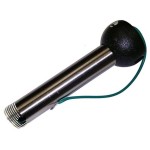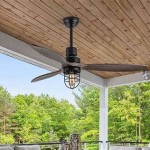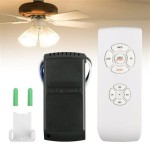Water Leaking From Ceiling In Basement: Causes, Identification, and Solutions
Discovering water leaking from the basement ceiling is a common yet distressing experience for homeowners. This situation can indicate a variety of underlying problems, ranging from minor plumbing issues to significant structural concerns. Understanding the potential causes, knowing how to identify the source of the leak, and implementing appropriate solutions are crucial for preventing further damage and maintaining the integrity of the building.
The appearance of water stains, dripping water, or damp patches on the basement ceiling should never be ignored. These are clear indicators of a problem that requires prompt investigation and remedial action. Delaying repairs can lead to escalated damage, including mold growth, structural weakening, and costly renovations. This article provides a comprehensive overview of the potential causes of water leaks in the basement ceiling, methods for identifying the source of the leak, and strategies for addressing the problem effectively.
Identifying the Source of the Leak
The first step in addressing water leaking from the basement ceiling is accurately identifying the source of the intrusion. This can sometimes be straightforward, especially when the leak is directly below a known water source. However, in many instances, the water may travel some distance before appearing on the ceiling, making it challenging to pinpoint the origin. A systematic approach is necessary to effectively trace the leak back to its source.
Start by examining the area directly above the leak. This involves checking the floor above the basement, which could be a kitchen, bathroom, or laundry room. Look for any signs of water damage, such as stained flooring, warped wood, or peeling paint. Pay close attention to areas around plumbing fixtures, including sinks, toilets, showers, and washing machines. Run water in these fixtures and observe if the leak worsens or if new leaks appear. This can help narrow down the potential source of the problem.
If the source is not immediately apparent, expand the search area. Check for any pipes running through the ceiling between the floor above and the basement. These pipes could be supply lines for domestic water, drain lines for wastewater, or heating system pipes. Examine the pipes for any signs of corrosion, cracks, or loose fittings. Even a small pinhole leak can cause significant water damage over time. Consider the age of the plumbing system. Older pipes are more susceptible to corrosion and leaks.
Another potential source of water leaks is the exterior of the building. Cracks in the foundation walls, inadequate sealing around windows or doors, and faulty gutters or downspouts can all allow water to seep into the basement. Inspect the exterior walls above the basement ceiling for any visible cracks or signs of water damage. Check the gutters and downspouts to ensure they are properly diverting water away from the foundation. If water is pooling near the foundation, it can eventually find its way into the basement through cracks or porous materials.
Consider environmental factors. Heavy rainfall or snowmelt can exacerbate existing leaks or create new ones. If the leak only occurs during or after periods of heavy precipitation, it is likely related to an exterior source. Similarly, if the leak is more prevalent during the winter months, it could be due to ice dams forming on the roof and causing water to back up under the shingles.
If the source of the leak remains elusive, consider consulting with a professional plumber or building inspector. They have the expertise and specialized equipment, such as moisture meters and thermal imaging cameras, to accurately locate the source of the leak without causing unnecessary damage to the building. A professional can also assess the extent of the damage and recommend the most appropriate repair solutions.
Common Causes of Water Leaks in Basement Ceilings
Understanding the potential causes of water leaks in basement ceilings is crucial for effective diagnosis and repair. The sources of these leaks can be varied, ranging from easily fixable plumbing issues to more complex structural problems. Accurately identifying the cause is the first step towards implementing a lasting solution.
Plumbing leaks are among the most common causes of water intrusion in basements. These leaks can originate from a variety of sources, including damaged or corroded pipes, loose fittings, and faulty plumbing fixtures. Over time, pipes can corrode due to age or exposure to corrosive water. This corrosion can lead to pinhole leaks or more significant ruptures, allowing water to escape and drip onto the ceiling below. Loose fittings at pipe joints can also cause leaks, especially when the plumbing system is subjected to pressure changes. Faulty plumbing fixtures, such as toilets, sinks, and showers, can leak if their seals are damaged or their components are worn out.
Another potential source of plumbing leaks is drain lines. These lines carry wastewater away from sinks, toilets, showers, and washing machines. If a drain line becomes clogged or damaged, it can lead to backups and leaks. Tree roots can also infiltrate drain lines, causing cracks and leaks. Regular maintenance of drain lines, including clearing clogs and addressing any signs of damage, is essential for preventing water leaks in the basement.
Foundation cracks are another significant cause of water leaks in basement ceilings. Over time, the foundation of a building can develop cracks due to settling, soil movement, or hydrostatic pressure. These cracks can allow water to seep into the basement, especially during periods of heavy rainfall or snowmelt. The water can then travel through the foundation walls and onto the ceiling, causing water damage. The severity of the cracks can vary, from hairline fractures to larger, more significant cracks. Even small cracks can allow a considerable amount of water to enter the basement over time.
Inadequate waterproofing is also a common culprit. The exterior of a basement foundation should be properly waterproofed to prevent water from seeping through the walls. This waterproofing typically involves applying a waterproof membrane to the exterior of the foundation walls and installing a drainage system to divert water away from the foundation. If the waterproofing is damaged or improperly installed, it can allow water to penetrate the foundation and enter the basement. Factors such as age, soil conditions, and improper installation can compromise the effectiveness of the waterproofing system.
Roofing issues can also contribute to basement water leaks, albeit indirectly. Damaged or missing shingles, faulty flashing, or clogged gutters can allow water to enter the building and travel down through the walls to the basement. The water may not initially appear to be related to the roof, but it can eventually find its way to the basement ceiling. Regular inspection and maintenance of the roof are crucial for preventing water leaks throughout the building.
Condensation can sometimes mimic a water leak, particularly in humid environments. Condensation occurs when warm, moist air comes into contact with a cold surface, such as a basement ceiling. This can lead to the formation of water droplets that drip onto the floor below. While condensation is not technically a leak, it can still cause water damage and promote mold growth. Proper ventilation and insulation can help reduce condensation in the basement.
Effective Solutions for Addressing Water Leaks
Once the source of the water leak has been identified, implementing effective solutions is crucial for preventing further damage and resolving the problem permanently. The appropriate solution will depend on the specific cause of the leak and the extent of the damage. It is often advisable to consult with a professional plumber or contractor to ensure that the repairs are carried out correctly and effectively.
For plumbing leaks, the solution typically involves repairing or replacing the damaged pipe, fitting, or fixture. Small pinhole leaks in pipes can sometimes be repaired with epoxy or pipe clamps. However, if the pipe is severely corroded or damaged, it is usually best to replace the entire section of the pipe. Loose fittings should be tightened or replaced as needed. Faulty plumbing fixtures, such as toilets or sinks, should be repaired or replaced to prevent further leaks. Ensure that all repairs are carried out according to local plumbing codes and regulations.
If the leak is caused by foundation cracks, the cracks need to be properly sealed to prevent water from entering the basement. Small cracks can often be sealed with epoxy or polyurethane sealant. Larger cracks may require more extensive repairs, such as injecting the cracks with expanding foam or installing a waterproof membrane over the affected area. In some cases, it may be necessary to excavate the exterior of the foundation and apply a waterproof coating to the entire wall. Consult with a structural engineer to determine the best approach for addressing foundation cracks.
Addressing inadequate waterproofing requires a more comprehensive approach. This typically involves excavating the exterior of the foundation and applying a new waterproof membrane to the walls. A drainage system, such as a French drain, should also be installed to divert water away from the foundation. The drainage system should be properly sloped to ensure that water flows away from the building. If the existing waterproofing is severely damaged, it may be necessary to remove it completely before applying the new membrane. This is a significant undertaking that should be carried out by a qualified contractor.
If the leak is related to roofing issues, the roof should be inspected and repaired as needed. Damaged or missing shingles should be replaced, and faulty flashing should be repaired or replaced. Clogged gutters should be cleaned and any damage to the gutters or downspouts should be repaired. Ensure that the roof is properly sealed to prevent water from entering the building. Regular roof maintenance can help prevent water leaks and extend the life of the roof.
For condensation problems, improving ventilation and insulation can help reduce moisture levels in the basement. Installing a dehumidifier can also help to remove excess moisture from the air. Ensure that the basement is properly ventilated to allow air to circulate. Insulating the basement walls and ceiling can help to prevent condensation by keeping the surfaces warm. Consider installing a vapor barrier to prevent moisture from entering the basement from the soil.
Regardless of the cause of the leak, it is important to address any existing water damage promptly. This includes drying out the affected area, removing any mold or mildew, and repairing any damaged drywall or flooring. Mold can grow quickly in damp environments, so it is important to address it as soon as possible. Use appropriate cleaning products and protective equipment when removing mold. In severe cases, it may be necessary to hire a professional mold remediation company. Taking proactive steps to prevent future water leaks is essential for maintaining a healthy and safe home.

Water Damage In Your Ceiling Isn T Always Easy To Spot Servpro

Basement Water Leaks Can Come From Above Home Repair Advice Youtube

Water Damage In Your Ceiling Isn T Always Easy To Spot Servpro

Who To Call For Water Leak In Ceiling Swc Construction

Finding The Source Of A Basement Water Problem Energy Vanguard

4 Causes Of Water Stains On Your Ceiling Ways To Respond

Water Leaking From Ceiling Apartment Swc Construction

Ceiling Water Damage Here S 5 Steps To Take Rock Emergency

Piping Leakage Causing Ceiling Repair Water Leak

Why Is My Basement Ceiling Wet Rainbow Restoration
Related Posts







